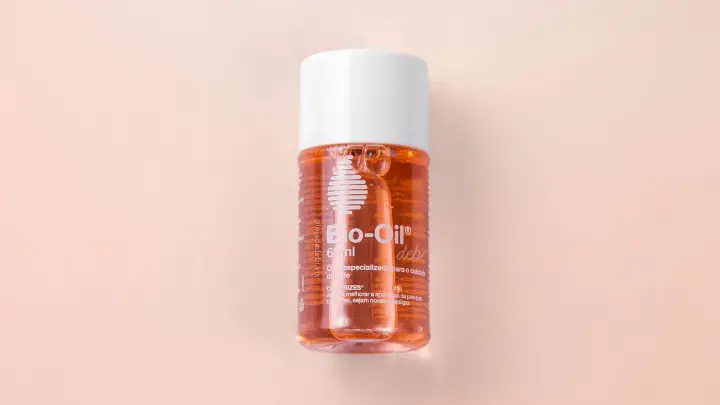The body can absorb moisture, thanks to the thin gaps in the skin. These tiny gaps that allow oil to get on the surface of the skin are called “pores”. The pores get clogged sometimes by a combination of debris and grime. So what is a clogged pore?
A clogged pore is one that harbors dirt, dead skin cells, and sometimes sebum. The skin sheds dead skin cells every day and these old cells stay on the skin and can mix with sebum. Sebum is a natural oil that is produced by the sebaceous gland.
The function of this oil is to help keep the skin’s moisture. The mixture of dead skin cells and oil can clog up the pores. This may cause breakouts to happen and may also cause the skin to look and feel bumpy.
Read ahead to find out more information about the causes, treatments, and prevention tips.
What Causes Pore Blockage?
The main factors that cause the clogging of pores are dead skin cells and sebum. However, there are other factors that can cause the pores to get blocked. Below are some of the possible factors that block the pores:
Comedogenic products
Skincare experts and dermatologists refer to substances and products that can block the pores as comedogenic. These products include skincare and makeup products such as foundation, sunscreen, concealers, and so on.
Loss of skin elasticity
Researchers of a study reveal that the pores become larger when there is a decrease in the elasticity of the skin. When the pores become larger, clogging becomes easy.
This is because dirt and other environmental aggressors will easily get into the skin. Once dust, dirt, or bacteria mixes with the dead skin cells and oil in the skin, the pores will become blocked.
Sebum production
If you have oily skin, then you must be familiar with the fact that your skin produces more sebum than usual. A small study reveals that the more the gland produces sebum, the larger the pores are likely to become.
Factors such as hormones, age, and genetics may influence excess oil production in the glands. Too much oil can cause dead skin cells to stick to the skin instead of shedding off.
Over-cleansing and over-exfoliating
An effective skincare routine includes the cleansing and exfoliating process because they plan an essential role in keeping the skin healthy and radiant. However, too much of it can strip your skin of its natural oils.
When this happens, the skin begins to produce more oil than it should. This causes the production of too much oil by the glands. This leads to the clogging of pores and may even result in irritation and enlarged pores.
What Happens When the Pores Get Clogged?
When the pores become blocked, you may experience cases of blackheads, white head, and acne. Dullness is also a way to figure out if you are experiencing pore blockage.
Acne begins to form as a result of pore blockage. This is due to the dead skin cells that cling to the pores with the skin’s sebum. You may experience other acne blemishes such as blackheads, milia, and cystic acne breakouts.
How Should You Treat and Prevent Clogged Pores?
There are several ways to unclog and treat pore blockage. Start by avoiding things that can cause further clogging of your pores. Below are ways to do that.
Use non-comedogenic products
Since comedogenic products can cause pore blockage, you should try as much as possible to avoid it. When purchasing skincare and cosmetics products, look for ones that have a label to confirm that they are non-comedogenic or oil-free.
Avoid scratching or picking
Squeezing and picking on blackheads and clogged pores can be very tempting. However, it is best to avoid doing that as squeezing or scratching will not help to unclog your pores. Instead, it will cause it to become worse and damage the skin.
Gentle cleansing
Cleansing your skin with a gentle cleanser in your morning and evening skincare routine will help to remove dirt, oil, and dead skin cells from the skin. Cleansing your skin gently will help to keep your skin fresh without irritating it.
Exfoliation
Exfoliation is the dead skin cells removal process that helps to rid the skin of all forms of dirt. Exfoliating the skin will help to unclog the pores and may also help to shrink pores.
You can exfoliate your face using the physical or chemical exfoliation method. The physical method involves the use of exfoliating gloves or brushes to remove dead skin cells from the skin.
While the chemical exfoliation method involved the use of acids to dissolve dead skin cells from the skin. A popular safe acid to try is salicylic acid as it works effectively as an exfoliant to help unclog the pores.
While you use this acid and any other chemical exfoliant, ensure that you use your sunscreen. This is because chemical exfoliants can cause your skin to be more sensitive to the sun.
Retinol
Oily skin is one of the factors that cause pore enlargement. Another factor that causes the pores to become larger is the reduction of elastin and collagen production in the skin.
With the reduction of collagen and elastin fibers in the skin cells, the skin loses its elasticity and this can cause the pores to become larger. Meanwhile, retinol is a popular anti-aging ingredient that also helps in sloughing dead skin cells from the skin.
If you are opting for this treatment, ensure that you start with a product that contains a low concentration of retinol. This is because it can irritate the skin when you initially start using it.
Also, ensure that you avoid direct exposure to the sun after using it. This is because retinol increases the rate at which your skin is sensitive to the sun. Avoid using retinol if you are pregnant or a breastfeeding mother.
Charcoal masks
Charcoal masks are quite popular in the skincare market. Activated charcoal is popularly used in formulating facial and body cleansers and masks. Using a charcoal mask may help to remove dirt and dead skin cells from the skin.
To use a charcoal mask to unclog your pores, all you need to do is to rinse your face and apply the mask for 5 minutes. After 5 minutes, you can pull the mask off or rinse it off with cold water.
Steam
You can use a skin steamer to get some warm, moist air on your skin. This will help to open up your pores to dissolve the blockage in them. After steaming, apply or use your mask or moisturizer to enhance better results.
Cleanse with baking soda
Baking soda is also a popular home remedy ingredient used for several concerns. Using baking soda on your skin will help to cleanse and exfoliate it. It does this while also balancing your skin’s pH level to help prevent more breakouts and dryness.
Look for cleansers that contain a considerable amount of baking soda. A baking soda cleanser will help to remove dead skin cells and buildup in the pores. This will help to unclog the pores and prevent further clogged pores.
Pore strips
You can also use pore strips to remove bacteria, dead skin cells, and oil from the pores. They are available for purchase in different shapes and sizes. Simply get one and use it on your skin to unclog your pores.
To use it, dampen the sticky strip and apply it to your face. Allow it to sit for up to 5 minutes before peeling it off your skin. Rinse your skin with warm water to remove the remaining leftover.
Ensure that you use it on damp skin while also following the package directions. Avoid this treatment if your skin is sensitive and likely to get allergic reactions.
Medical treatments
If none of the previously mentioned techniques fail to work, you can consult a dermatologist for help. Below are examples of treatments that a dermatologist can do to help unclog your pores.
Microdermabrasion
This involves the use of a diamond or crystal-tipped tool by a dermatologist to exfoliate the skin. This can help to dissolve and remove dead skin cells from the pores. Microdermabrasion also works to improve the texture of the skin.
Hyaluronic acid treatment
A study reveals that hyaluronic acid injections can help to reduce pore size. However, it does have several side effects and that is why it is important to visit a skincare expert. This will help in deciding the right treatment for your pores.
Extractions
Extractions are done using a metal extractor tool to apply pleasure around the affected area of the skin. This process works effectively to extract blackheads, pimples, and other toxins from the pores.
It is important to go to a skincare expert for this, as doing the extraction yourself can damage your pores.
What Causes Clogged Pores on the Scalp?
The scalp is also part of the skin, which means it can also get clogged. The clogging of the hair follicles on the scalp can happen due to several factors. An increase in the production of oil and a buildup of dead skin cells is the cause of the blockage of your follicles.
Improper hair care routine, hair care product buildup, and sweat are also factors that clog the pores or follicles. When there is a blockage in the follicles, there is a risk of the development of acne.
However, a change in your hair care routine and proper exfoliation of the scalp can help to relieve and unclog your scalp pores.
Can Armpit Pores Get Clogged?
The armpit pores or follicles can get clogged and this condition is called hidradenitis suppurativa (HS). This happens when there is a buildup of oil, sweat, and dead skin cells in your follicles.
This buildup can become infected by bacteria, thereby causing painful bumps on your armpit. Without bacteria, clogged armpit pores are nothing to worry about. However, once it gets infected, the bumps will become inflamed and cause discomfort.
How Do You Get Rid of Clogged Armpit Pores?
One way to get rid of clogged armpit pores is to keep the area clean. You can make use of exfoliants to dissolve the buildup in your blocked pores.
You can also make use of an antibacterial wash or acne treatments to unclog your armpit pores. Below is a DIY bleach bath to try to help get rid of clogged armpit pores.
How to do it:
- Add ½ cup of bleach into a water-filled tub
- Soak your body in the water for a few minutes
- Rinse it off with warm water
- Dry your skin and apply your moisturizer
Frequently Asked Questions
Is clogged pore cancer?
No, it isn’t. A clogged pore is not a form of cancer and does not cause cancer.
However, basal cell carcinoma is a type of skin cancer that can be mistaken as a clogged pore. It is important to take note of any blemish that appears on your skin. If your clogged pore doesn’t dissolve after some time, consult a dermatologist for help.
Is a clogged pore a pimple?
No, it isn’t. Pimple is bumpy inflammation that can happen as a result of a clogged pore.
When bacteria gains access to your clogged pores, it will infect the buildup and that is how pimples form on the skin.
Can a clogged pore dissolve on its own?
Yes, it can. A clogged pore can dissolve on its own. However, it can take months or even up to a year for this to happen.
The best way to quickly get rid of a clogged pore is to try out the remedies recommended in this article or visit a dermatologist for faster treatment.
Conclusion
A clogged pore is not a thing of worry until it gets infected by bacteria. When bacteria mix with the buildup of sweat, oil, and dead skin cells that are blocking the pores, the skin begins to show inflamed bumps.
Acne breakouts happen as a result of clogged pores and this ranges from mild to severe acne. Taking care of the skin by avoiding comedogenic products and regular exfoliation of the skin are ways to help unclog pores.
Thank you for reading.
Visit Serum101 to read more enlightening skincare guides.







